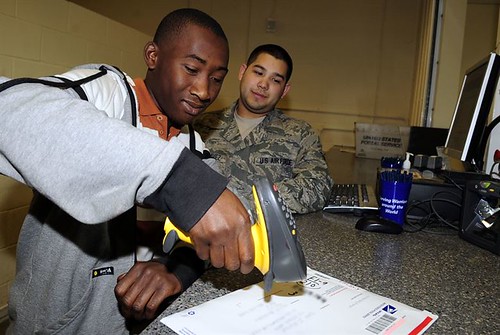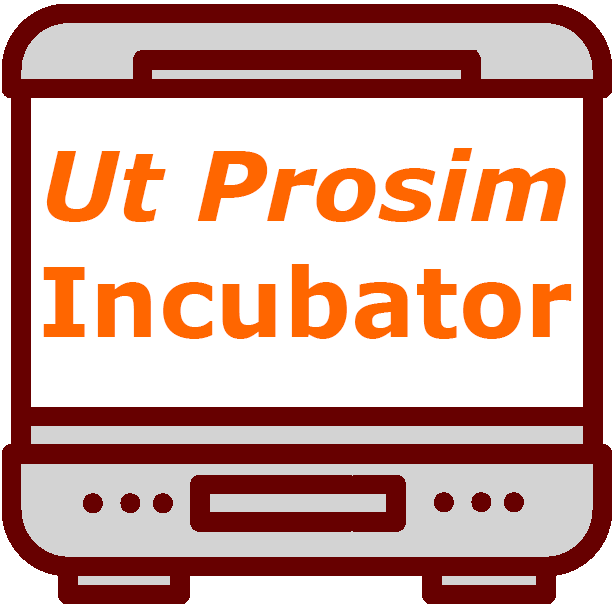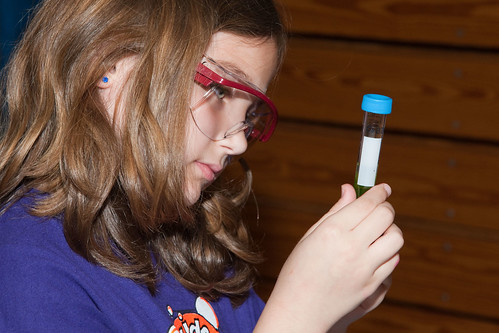-
About
Our Story
back- Our Mission
- Our Leadershio
- Accessibility
- Careers
- Diversity, Equity, Inclusion
- Learning Science
- Sustainability
Our Solutions
back
-
Community
Community
back- Newsroom
- Discussions
- Webinars on Demand
- Digital Community
- The Institute at Macmillan Learning
- English Community
- Psychology Community
- History Community
- Communication Community
- College Success Community
- Economics Community
- Institutional Solutions Community
- Nutrition Community
- Lab Solutions Community
- STEM Community
- Newsroom
A STEM-Based Technical Description Assignment
- Subscribe to RSS Feed
- Mark as New
- Mark as Read
- Bookmark
- Subscribe
- Printer Friendly Page
- Report Inappropriate Content
 This week I am sharing the third writing assignment in the series of assignments I designed for my technical writing course. The series focuses on tasks related to a fictional business incubator, the Ut Prosim Incubator. In this week’s assignment (which is a revision of an activity I shared in the past), the fictional companies students have been working with are participating in a STEM (Science, Technology, Engineering, and Math) education initiative.
This week I am sharing the third writing assignment in the series of assignments I designed for my technical writing course. The series focuses on tasks related to a fictional business incubator, the Ut Prosim Incubator. In this week’s assignment (which is a revision of an activity I shared in the past), the fictional companies students have been working with are participating in a STEM (Science, Technology, Engineering, and Math) education initiative.
At this point in the course, students have established a company and given it an identity by designing visual and writing guidelines for the ways that their companies use the different kinds of correspondence. This week’s assignment asks students to turn to a short document that focuses directly on a technical task, describing an object, mechanism, or process for an audience of middle- and high-school students.
The assignment below has some minor changes to remove specific information that is relevant only to the students in my classes. References to “Markel & Selber” in the assignment refer to chapters in the class textbook Technical Communication by Mike Markel & Selber and Stuart Selber.
Technical Description Assignment
Background
You will write a technical description related to your field (such as of a tool that is typically used or a process that is part of your industry). The description will be part of a diversity initiative to interest local students in STEM careers (STEM = Science, Technology, Engineering, and Math). The description will relate to a task that local middle and high school students will complete as they shadow someone in your company.
You will also write the user document that students will use in the diversity initiative described above. You will provide step-by-step details on how to complete a simple and appropriate task that will help local students learn more about what someone in your career does.
The Scenario
Note: We will use this scenario for two projects: Technical Descriptions (this week) and User Documents (next week).
This week, you received the following memo, explaining your responsibilities for the Incubator’s annual Try-It-Out Day:
 Ut Prosim Incubator
Ut Prosim Incubator
1872 Inventors Way, Blacksburg, Virginia 24060
Interoffice Memo
To: All Incubator Companies
From: Traci Gardner, Ut Prosim Director
Subject: Preparing for Try-It-Out Day
Date: September 10, 2018
 On Try-It-Out Day, students from Montgomery, Giles, Pulaski, and Floyd Counties will spend most of the day working one-on-one with employees from every company in the Incubator to learn about what careers in STEM involve. We will match students with the company that fits their interests, and then you will determine the employees who will work with those students.
On Try-It-Out Day, students from Montgomery, Giles, Pulaski, and Floyd Counties will spend most of the day working one-on-one with employees from every company in the Incubator to learn about what careers in STEM involve. We will match students with the company that fits their interests, and then you will determine the employees who will work with those students.
What Happens on Try-It-Out Day?
Try-It-Out Day will take place on Wednesday, September 26, from 8AM to 4PM.
Students will arrive at the Incubator at 8AM and spend the entire day with their assigned company, following this general schedule:
| Time | Activity |
|---|---|
| 8:00 AM | Welcome assembly for all students and company representatives |
| 8:30 AM | Students tour their assigned company, learning about what the company does and how it works |
| 9:00 AM | Students pair off with employees, who tell the students about their specific careers |
| 10:00 AM | Refreshments in the Incubator Atrium |
| 10:30 AM | Students learn to complete an activity that their employee-hosts do in the normal course of work |
| 12:30 PM | Lunch in the Incubator Cafeteria |
| 1:30 PM | STEM Challenge (a competition, students and employees collaborate in teams based on the schools students attend) |
| 3:30 PM | Refreshments in the Incubator Atrium and Closing Comments |
| 4:00 PM | Students board buses to return home |
What Do You Need to Do to Prepare?
From 10:30 to 12:30, employees from your company will teach students about some activities that they do in the normal course of their work. To prepare for this portion of the day, please choose a specific activity that students can safely complete in 15–30 minutes. Ideally, choose an activity that students can complete more than once, such as examining and sorting specimens as shown in the image above.
Once you have chosen an activity, create two documents that students can take home and share when they return to their schools:
- A technical description of an object, mechanism, or process that relates to the activity students will complete.
- A user document that includes instructions the student can follow to complete the activity.
Any Questions?
If you need any help with this project, please let me know or contact my assistant, Leslie Crow <lcrow@utprosimincubator.org>. You can also talk with Incubator members who participated in the event last year.
Relevant Details
Note: These details apply to all of the projects you include in your portfolio.
Your company’s address is [Your Company Name], Ut Prosim Incubator, 1872 Inventors Way, Suite #[you choose a number], Blacksburg, Virginia 24060. Your company’s phone number is 540-555-5555. You may create a fictional Internet domain for your company, and use that domain for a web page address and your email addresses. If you’d like, you may create other information (including a logo) for your company as appropriate. Be sure that you use the information that you create consistently across all of your projects.
The Project Assignment
Step 1: Decide on the focus for your two projects (this week’s Technical Description and next week’s User Document).
Your focus will be to talk about a simple task that someone in your career field would complete. As you decide on your focus, think about activities that will meet these goals:
- give the students an idea of what someone in your career does.
- excite the students about the prospects of a career like yours.
Try to limit yourself to topics with which you have some expertise (or at least some experience). Since middle and high school students will be following the instructions, choose something that they could believably complete and that will not place them in a dangerous situation.
Step 2: Analyze the audiences for your two projects.
You will write a technical description and user document that middle and high school students can use as they complete an activity on Try-It-Out Day. Use the information from Markel & Selber, Chapter 5 to decide how the characteristics of the audiences will influence your writing. Consider the questions in Figure 5.2: Audience Profile Sheet and/or the Writer’s Checklist at the end of the chapter to guide your analysis.
Step 3: Examine the information about technical descriptions in Markel & Selber.
The textbook provides step-by-step details on how to write a technical description. Follow the textbook as you work on your project. In particular, be sure that you do the following:
- Incorporate definitions for unfamiliar terms and ideas, following the “GUIDELINES: Writing Effective Sentence Definitions” (on page 539 of Markel & Selber) and the related information in the textbook.
- Use the questions in “TABLE 20.1: Questions To Answer in Introducing a Description” (on page 550 of Markel & Selber) to gather the relevant details for your description.
- Follow the “GUIDELINES: Providing Appropriate Detail in Descriptions” (on page 551 of Markel & Selber) to ensure you include the proper level of specific information.
- Explore the examples in Markel & Selber to see some of the options for layout and formatting:
- Figure 20.4: Inside Asimo
- Figure 20.5: How Our Solar Electric System Works
- Figure 20.6: Drivetrains
- Figure 20.8: Turning Biomass into Fuel
Step 4: Write the technical description for students.
Compose your description, as requested in The Scenario above, with all the details you have gathered and created. Review the assessment guidelines below to ensure you have met all the requirements for the description. As you work, also keep the following points in mind:
- Use plain language to make the ideas easy to find and read. Refer to the resources from Module 2 as needed.
- Follow all relevant ethical guidelines as you work using the Writer’s Checklist at the end of Chapter 2 (on page 40 of Markel & Selber).
- Follow the suggestions for emphasizing important information, using the Writer’s Checklist for Chapter 9 (on page 211 of Markel & Selber) to check your work.
- Use the Writer’s Checklist for Chapter 11 (on page 288 of Markel & Selber) to ensure that your document takes advantage of design principles to make it reader-friendly.
- Make a good impression with accuracy and correctness. Your document should be polished and professional.
Step 5: Check your draft against the Writer’s Checklist.
Be sure that you include the required features for technical description. Review your project, using the Writer's Checklist for Chapter 20 (on page 576 of Markel & Selber) and the Assessment Criteria below.
Step 6: Review your draft for design and basic writing errors.
Everything you write should use accurate/appropriate image editing, grammar, spelling, punctuation, mechanics, linking, and formatting. These are important basic writing skills that you should have developed in high school. Review your project using the Writer’s Checklist at the end of Markel & Selber, Chapter 10 (on page 242 of Markel & Selber).
You can also consult the information on “Sentence-Level Issues” in Markel & Selber, “Appendix, Part 😧 Guidelines for Multilingual Writers (ESL)” (on page 683 of Markel & Selber). While the section is labeled for multilingual writers, it is useful for everyone. It includes explanations and examples for many common mistakes writers make.
Step 7: Submit your draft to your Writing Group in Canvas.
Post a rough draft of your technical description to your Writing Group in Canvas in the 09/13 Draft Feedback Discussion in Canvas. Additional instructions are in the Discussion. Post a draft of your technical description by September 13. If you are late submitting a draft, your group may not have time to provide feedback.
Step 8: Provide feedback to your Writing Group in Canvas.
Provide feedback to the members of your writing group in the 09/13 Draft Feedback Discussion in Canvas, by September 17 (end of the grace period). Use the information on the Writing Groups page to provide constructive feedback that will help your group members make concrete improvements to their drafts.
Step 9: Revise your draft.
Use the feedback that you receive from your group members to revise and improve your document. You can share your draft again with your Writing Group, if you desire. As you revise, keep in mind the advice in the steps above, as well as the Assessment Criteria below.
Step 10: Include a polished version of your project in Project Portfolio 1, due October 1.
Have your Technical Description Project finished and ready for submission in your Project Portfolio 1, which is due Monday, October 1. The grace period for Project Portfolio 1 ends at 11:59PM on Thursday, October 4.
Assessment Criteria
For All Technical Writing Projects
All technical writing projects should meet the following general criteria:
- Makes a good first impression as a polished and professional document.
- Meets the needs of the intended audience.
- Demonstrates how to emphasize important information.
- Uses layout and formatting that makes information easy for readers to find and read, and that follows the standards you have set for your company.
- Is written in plain language, which communicates the ideas clearly.
- Follows all relevant ethical guidelines.
- Uses accurate/appropriate grammar, spelling, punctuation, mechanics, linking, and formatting.
For a Description of an Object or Mechanism
Your project should meet the following criteria for effective technical descriptions, based on the checklist at the end of Chapter 20 of Markel & Selber:
- Indicates the nature and scope of the technical description clearly.
- Opens with an introduction that explains these major components:
- what the item is.
- how it functions.
- what it looks like.
- what its parts are.
- Includes a graphic in the introduction that identifies the principal parts.
- Uses an appropriate organizational principle.
- Includes a graphic for each of the major components.
- Summarizes the major points in the part-by-part description in the conclusion.
- Includes (if appropriate) a description of the item performing its function.
For a Description of a Process
Your project should meet the following criteria for effective technical descriptions, based on the checklist at the end of Chapter 20 of Markel & Selber:
- Indicates the nature and scope of the technical description clearly.
- Opens with an introduction that explains the following:
- what the process is.
- how it functions.
- where and when it takes place.
- who or what performs it.
- how it works.
- what its principal steps are.
- Includes a graphic in the introduction that identifies the principal steps.
- Discusses the steps in chronological order or some other logical sequence).
- Makes the causal relationships among the steps clear.
- Includes graphics for each of the principal steps.
- Summarizes the major points in the step-by-step description in the conclusion.
- Discusses, if appropriate, the importance or implications of the process.
Image Credit from Memo: RDECOM Scientist and Engineers bring their special skills and enthusiasm to STEM Night at Fallston M... by U.S. Army RDECOM on Flickr, used under a CC-BY 2.0 license
In addition to this assignment, I shared information on readability statistics with students. While I believe such statistics have definite limitations, tools such as the Flesch-Kincaid Grade Level help students determine if they are writing too far above or too far below their audiences’ comprehension level.
The second part of this assignment focuses on writing the instructions that the middle and high school students will follow on Try-It-Out Day. I’ll share that activity next week. Until then, if you have any questions or comments about the assignment, please leave me a comment below. I’d love to hear from you.
Photo credit: U.S. Air Force photo/Senior Airman Ethan Morgan, from “Summer hire program offers students multiple benefits” on the Royal Air Force Mildenhall website, used under public domain.

